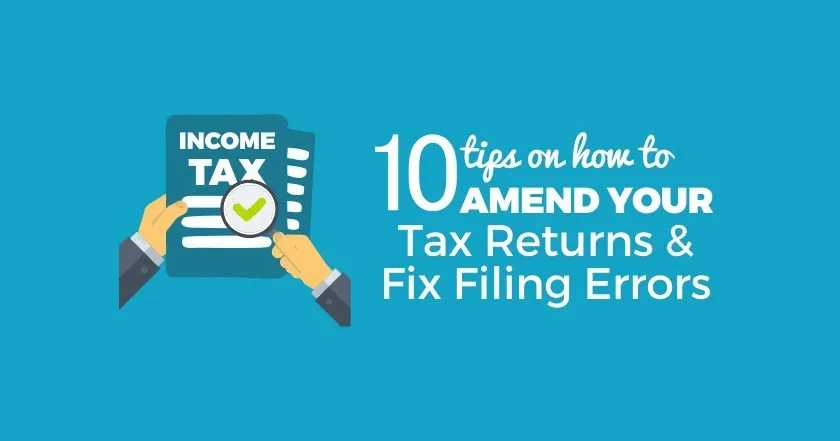Filing a tax return is a critical process for individuals, small businesses, and corporations alike. However, errors can occur, and financial circumstances may change, necessitating the need to amend a previously filed tax return. This guide will provide detailed information on tax amendments for various entity types, including the reasons for amending, the process involved, and the implications of such amendments.
What is a Tax Amendment?
A tax amendment refers to the process of making changes to a tax return that has already been filed. This could involve correcting errors, updating personal information, or adjusting income and deductions due to overlooked or new information.
Why Amend a Tax Return?
Common reasons for amending a tax return include:
- Correcting filing status: For instance, changing from single to married filing jointly.
- Adjusting income reported: This might include reporting additional income from a W-2 or 1099 form received late.
- Claiming additional deductions or credits: Such as educational credits or deductions for charitable donations not claimed originally.
- Correcting errors in dependents claimed: Either adding a dependent not previously claimed or removing one incorrectly claimed.
The Process of Amending a Tax Return
Individuals (Form 1040-X):
- Form Used: Individuals must use Form 1040-X to amend a federal tax return. This form allows you to correct previously filed Forms 1040, 1040-A, or 1040-EZ.
- Filing Deadline: Generally, you must file Form 1040-X within three years from the date you filed your original tax return or within two years from the date you paid the tax, whichever is later.
- Steps Involved: When amending, you must indicate the year of the return you are amending at the top of the form. The form has three columns: A shows original figures, B shows the changes, and C shows the corrected figures. You’ll also need to provide a detailed explanation of the changes.
Small Businesses and Self-Employed (Schedule C and Other Relevant Forms):
- Appropriate Forms: Depending on the business structure, different forms may need amendments. Sole proprietors and single-member LLCs amend their business taxes by changing the Schedule C attached to their personal tax return.
- Important Considerations: For partnerships that originally filed Form 1065, an amended return involves filing Form 1065-X. For S corporations, it’s Form 1120S, amended through Form 1120S-X.
Corporations (Form 1120-X):
- Form Used: Corporations file an amended return using Form 1120-X.
- Key Details: Similar to personal amendments, corporations need to provide clear explanations for the income, deductions, credits, or other amounts being adjusted from the original tax return.
Important Tips for All Entities
- Supporting Documentation: Always attach any relevant documentation that supports the changes made to the return. This might include revised W-2s, 1099s, or receipts for deductions and credits.
- State Tax Returns: Remember, amending your federal tax return does not automatically change your state tax return. You may also need to amend your state return.
- Timing and Refunds: If your amendment results in a refund, note that refunds from amended returns can take up to 16 weeks to process.
- Penalties and Interest: If the amendment results in additional tax owed, it’s advisable to pay as soon as possible to limit interest and penalty charges.
Amending a tax return, whether for an individual, a small business, or a corporation, is an important process that corrects inaccuracies and ensures compliance with tax laws. Given the complexities involved, particularly for businesses and corporations, it is often wise to consult with a tax professional. This ensures that amendments are completed correctly and efficiently, and helps maintain the integrity of your financial responsibilities.
10 Helpful Steps to Amending a Tax Return
Amending a tax return can be daunting. Here are ten essential steps to help navigate the process smoothly and accurately:
Step 1: Gather Original Tax Return and Documents
Start by collecting all documents related to your original tax return, including the return itself, W-2s, 1099s, receipts, and any other supporting documentation. This will help you identify the discrepancies and determine the necessary adjustments.
Step 2: Determine the Need for an Amendment
Review your original return to understand if an amendment is necessary. Common reasons include reporting additional income, changing your filing status, claiming overlooked deductions, or correcting inaccurate information.
Step 3: Obtain the Correct Amending Forms
- For individual returns, use Form 1040-X.
- For small businesses, use Schedule C adjustments within Form 1040-X or other relevant business tax amendment forms based on entity type (e.g., Form 1065-X for partnerships).
- For corporations, use Form 1120-X.
Step 4: Fill Out the Amendment Form Accurately
On Form 1040-X and other amendment forms, fill in the current year at the top of the form, specify the year of the return you are amending, and use the columns provided to show the original amounts, the changes, and the corrected amounts.
Step 5: Provide a Clear Explanation of Changes
Each form will have a section for explaining the reasons for the changes. Be as detailed as possible to avoid questions or further correspondence from the IRS or relevant tax authority.
Step 6: Attach Supporting Documents
Include any new or additional documentation that supports the changes made in the amendment. This could be revised W-2s, 1099s, receipts for deductions, or other relevant paperwork.
Step 7: Review the Amendment for Accuracy
Double-check the amendment form and attached documents. Ensure that all calculations are correct and that all necessary information is complete and accurate to prevent further issues or delays.
Step 8: Consult a Tax Professional
If you are unsure about any part of the amendment process, consider consulting with a tax professional. They can provide valuable advice and ensure that your tax return amendment complies with current tax laws and regulations.
Step 9: File the Amendment
Once everything is in order, file the amendment form. Note that while some amendments can now be filed electronically, others might still require paper filing. Check the latest IRS guidelines or consult with a tax professional.
Step 10: Monitor the Status of Your Amendment
After filing, you can track the status of your amended return. For federal amendments, you can use the “Where’s My Amended Return?” tool on the IRS website. Keep in mind that processing can take up to 16 weeks.
Conclusion
By following these steps, you can amend your tax return efficiently and accurately. Remember, the key to a successful tax amendment is meticulous preparation, detailed documentation, and, when necessary, the guidance of a professional. This ensures that your tax responsibilities are met and your financial records remain accurate and compliant with tax laws.





